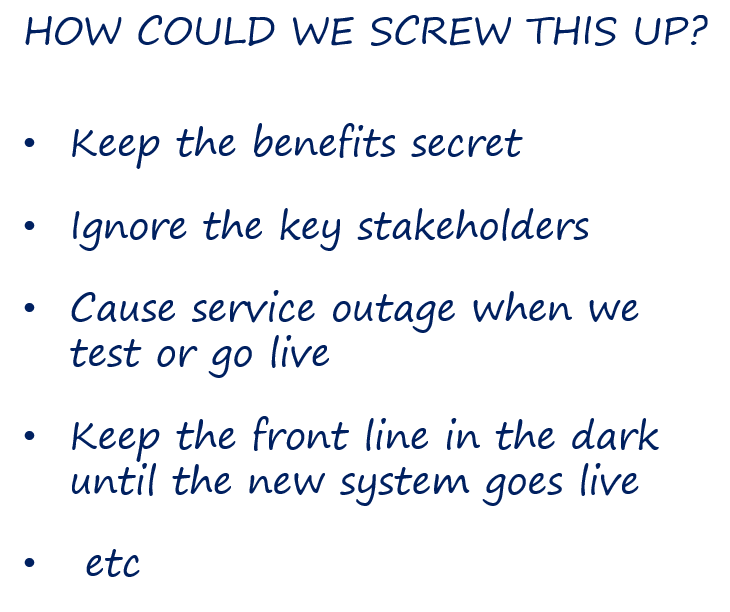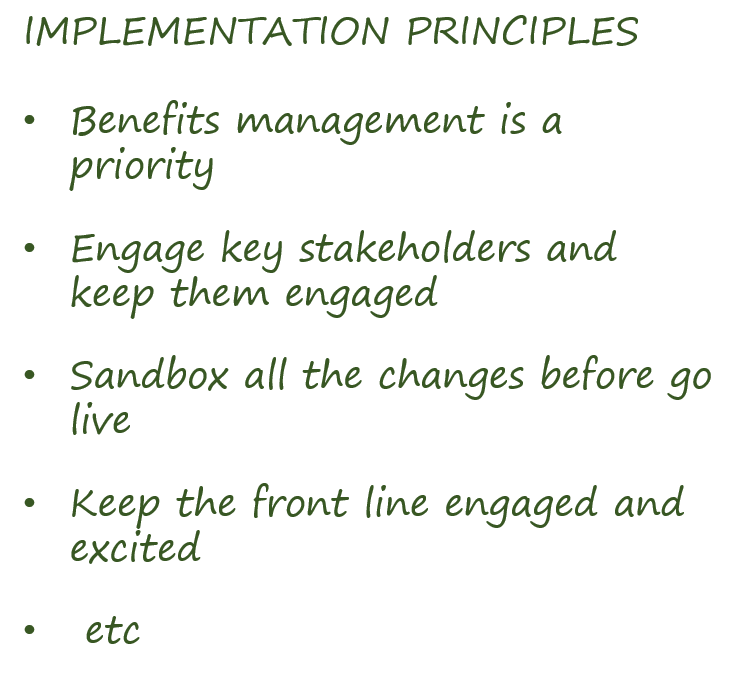To focus your project, add a To-Not-Do list to your to-do list
There’s an exercise that’s both entertaining and useful when setting up and planning a new project or business venture: thinking of all the ways you could make it fail.

Here’s how it works: in a planning process, once you have alignment on the goals of the initiative that you’re developing, it’s time to transition into planning delivery. I find teams can get a bit stuck at this point, so it’s a good idea to flip the idea of planning on its head. Ask how you could really screw this thing up then throw some ideas around and write them down. Unless your team’s had a collective humour bypass you’ll find this pretty hilarious.

Before it gets too out of hand though, stop and review. Flip the list around so all those screw-ups become positive actions. What you then have is a powerful list of principles to adhere to during the implementation phase.
Make it personal
I’ve started to use this approach on projects I’m running, even if they just involve me. I spend a few minutes jotting down a few ways in which I could fail to deliver. I call it the result my To-Not-Do List and I use it, unaltered, as a check against any bad habits that I might fall into unawares.
Stop laughing
Amidst the hilarity that a group session might foster when creating their own To-Not-Do List there’s a sobering realisation. A lot of the screw-ups that are identified are things that the organisation is doing now. The fact that the negatives usually flow so easily in this kind of a discussion is that they are bad habits that are often ingrained and indeed tolerated in the organisation.
The To-Not-Do List offers a sharp corrective to a team that may find it starts out with great purpose and ambition but then enters a state of drift, where deadlines are missed, and the required change doesn’t happen. High-performing change teams have to model the required behaviour in the new organisation that they are building and having a robust and candid discussion about the To-Not-Do List can help immensely.
To find out how Open Chord can help you plan and execute change effectively, please get in touch.
Featured image by Steve Buissinne from Pixabay
